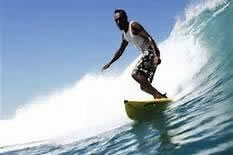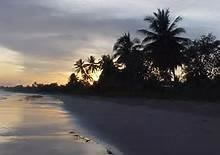Country Feature: Papua New Guinea
Flag of Papua New Guinea
Location of Papua New Guinea in Southeast Asia
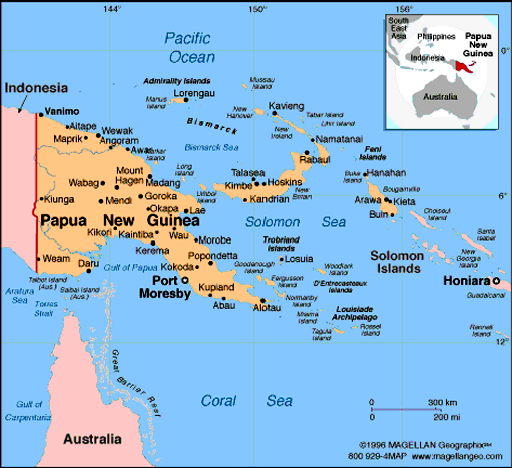
Port Moresby, Capital of Papua New Guinea
Papua New Guinea At A Glance
Location: Located at the Oceania, group of islands including the eastern half of the island of New Guinea between the Coral Sea and the South Pacific Ocean, east of Indonesia.
Total Area: 462,840 sq km (land: 452, 860 sq km, water: 9,980 sq km)
Government Type: Constitutional parliamentary democracy and a commonwealth realm. Achieved Independence on 16 September 1975 (from the Australian-administered UN trusteeship).
Nationality: Papua New Guinean (s)
Ethnic Groups: Melanesian, Papuan, Negrito, Micronesian, Polynesian
Capital: Port Moresby (population 314,000 (2009)
Population: 6,431,902 (July 2013 est.)
Climate: Tropical, northwest monsoon (December to March), southeast monsoon (May to October), slight seasonal temperature variation.
Languages: Tok Pisin (official), English (official), Hiri Motu (official), some 836 indigenous languages spoken (about 12% of the world’s total); most languages have fewer than 1,000 speakers.
Note: Tok Pisin, a creaole language, is widely used and understood; English is spoken by 1%-2%; Hiru Motu is spoken by less than 2%.
Religions: Roman Catholic 27%, Protestant 69.4%, Baha’i 0.3%, indigenous beliefs and other 3.3% (2,000 census).
Natural Resources: Gold, copper, silver, natural gas, timber, oil, fisheries
Agriculture (Products): Coffee, cocoa, copra, palm kernels, tea, sugar, rubber, sweet potatoes, fruit, vegetables, vanilla, poultry, pork, shellfish
Industries: Copra crushing, palm oil processing, plywood production, wood chip production, mining (gold, silver and copper), crude oil production, petroleum refining, construction, tourism
GDP (Purchasing Power Parity): $19.41 billion (2012 est.)
GDP (Official Exchange Rate): $15.79 billion (2012 est.)
GDP (Real Growth Rate): 9.1% (2012 est.)
GDP – Per Capita (PPP): $2,800 (2012 est.)
GDP – composition, by sector of origin: Agriculture: 28%, Industry: 38.6%, Services: 33.4% (2012 est.)
Exports – Commodities: Oil, gold, copper ore, logs, palm oil, coffee, cocoa, crayfish, prawns
Exports – Partners: Australia 29%, Japan 9.6%, China 4.8% (2012)
Imports – Commodities: Machinery and transport equipment, manufactured goods, food, fuels, chemicals
Imports – Partners: Australia 36.3%, Singapore 13.8%, Malaysia 8.4%, China 7.9%, Japan 5.8%, US4.8%
(2012)
Currency: Kina (PNG)
Exchange Rate: 1 Kina (PNG) = USD 0.40
Dialling Code: +675
Sources: CIA – The World Factbook
Tourism Industry in Papua New Guinea
1. Overview
Papua New Guinea (PNG) has some of the beautiful and pristine scenery (both marine and on land) in the world. Its environment and intriguing culture remains untouched in an age of rapid development and industrialization. In line with other development policies, the government envisages the safeguard of the cultural, social and environmental resources of the country. These peculiarities make PNG a potential big tourist destination.
However, the sector is yet far from being developed to its full potential.
In PNG, annual arrivals have remained just one tenth of Fiji’s (estimated 500,000) and the purpose of visit of most of them continue to be business related travels (possibly linked to oil and mining) rather than holidays. The number of holiday visitors has actually shrunk in 1998 when they totaled almost 22,500 compared to just 14,800 holiday-makers in 2003. In 2005 the figure for holiday makers increased to approximately 18,000 which is a marked improvement from 2003. Arrivals for business and conferences have also declined but by less than in the case of holiday-related visits.
Significant numbers of tourist visitors come from Japan, USA, and other European markets (UK, Russia, Scandinavia, Germany and Italy. The Australian market is the single largest source of inbound travel to PNG comprising over half of total visitors and 20% of these visitors account for holiday/leisure.
Tourism has one of the biggest potentials of all the sectors and could, if well developed; offer badly needed employment and income opportunities, also at village level. Guest houses, hotels, lodges and tour operating are some of the areas that offer opportunities for investors. The government has targeted tourism as a priority area for economic development of the country and for the creation of employment opportunities at rural and urban levels. PNG however remains expensive for most potential tourists and provides good value for money to only the real adventure travelers. Most of potential customers indeed feel that the cost for tourists is comparably high in relation to other countries and tourism places.
2. PNG Tourism Promotion Authority
The Tourism Promotion Authority (TPA), a statutory organization established by the government, is responsible for the development and expansion of tourism in Papua New Guinea. Its activities are mainly directed at the marketing of PNG as a tourist destination and a safe location for hospitality investment. Results to date, however, are disappointing and reasons often mentioned are related to high travel cost to and from PNG, lack of information abroad and within the country, high domestic transport cost and lack of road and other infrastructure, unbalanced relation between value received and money to be paid, law and order problems. This is to be seen against high tourism potentials within PNG which is often only known to tourism insiders in niche areas. Presently a master plan is being elaborated which would then serve as a guideline for further tourism development and promotion. The TPA is currently promoting new investments in major tourism facilities, such as large scale resorts.
In March 2006 TPA participated in the world’s largest tourism fair, the “International Tourism Fair” (ITB) in Berlin/Germany. Appropriate packages including financial incentives for investors are available. Planning guidelines and suitable sites have been identified but investors are now needed to develop these projects. Whilst this is being done by TPA as the core agency, other institutions, including Department of Foreign Affairs (DFA) and Department of Commerce and Industry, might also support this developing initiative with appropriate trade policies in services.
Within any tourism related assistance, support should also focus on helping in capacity building related to provision of more efficient international tourism services through Small and Medium Enterprises, pro-poor tourism programs to encourage employment and income generation.
3. Key Tourism Products
• Accommodation
There are approximately 212 hotels and accommodation outlets in PNG although only 65 are featured on the PNG Tourism Promotion Authority (PNGTPA) website.
• Tour and Inbound Operators
There are approximately 13 travel agents and 25 tour operators operating throughout PNG. The PNG TPA has supported the establishment of the PNG Tour Operators Association which has 12 registered members. The majority of the tour operators are small and focus on tour operations with 10 operating as inbound, the larger tour operators include Melanesian Tourist Services and Trans Niugini Tours who operate their resorts and operate own tours. These two companies have taken a proactive role in promoting PNG as a tourism destination over the last 20 years through international trade shows and consumer and trade marketing.
• Key Product segments
PNG has a wealth of nature based and cultural products which form the basis of the tourism products. The key product segments include:
a) Diving
PNG is recognized as a world class dive destination by dive industry bodies and publications. The dive sector is well organized through the Dive Industry Association (DIA) which coordinates the promotion of diving and is successful in gaining recognition for the quality of diving in PNG. The DIA receives support funding from TPA per annum for promotional purposes.
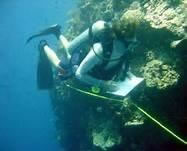
b) Trekking and Climbing
Trekking represents a growth market in PNG. This product is generally placed at the ‘hard adventure’ end of the market. The development and promotion of the Kokoda Trail has been particularly successful in the last four years. It is estimated that approximately 3,000 tourists trekked the Kokoda Trail in 2006 and this figure increased in 2008. Other treks that are been developed include around Mt Wilhem and the Black Cat.
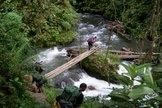
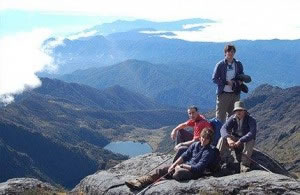
c) World War II (WW II) History
This is an important sector for PNG and although it is restricted to the Japanese and Australian markets, the WW II history product impacts upon all the other major segments. For example, the primary motivation for undertaking Kokoda is because of its association with WW II rather than because of it might be the most interesting scenically. The current WW II heritage market is centred in Rabaul, Milne Bay and Kokoda.
Concerns have been raised about the long term sustainability of this product due to the lack of conservation/ protection measures in place in PNG.
d) Surfing
Surfing represents an emerging market for PNG and it is currently focused on Kavieng and Vanimo, with the Nusa Island Resort catering for the majority of the surfers traveling to PNG. Surfing is seasonal and it is estimated that the number of surfers arriving has increased from between one to fifteen hundred per annum. The primary potential market is Australia followed by Japan.
The PNG Surfing Association is a new and well organized body that has developed number of special events which have potential to increase the number of visitors and provide greater media exposure for PNG.
e) Culture
PNG has a very unique diverse culture in the world and provides a destination with a unique selling point. The cultural shows held in Mt Hagen, Goroka, Rabual, Port Moresby and Daru attract a lot of visitors from mainly Europe and United States.
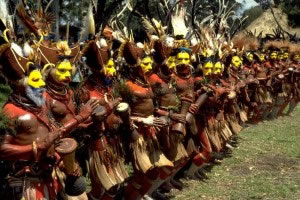
f) Bird Watching
PNG has approximately 13 percent of the worlds’ exotic bird species (equates to 1,296 birds). Bird watching is an extremely significant segment within the nature based recreation market.
g) Flora and Fauna
PNG has a range of special specialist flora and fauna products which have potential to attract a greater number of tourists. PNG offers a significant diversity and concentration of many rare plants and animals, including orchards, insects, butterflies and bats. In addition, there are outstanding natural areas which may appeal to a wide range of tourists.
h) Fishing
PNG has an excellent sport – fishing product (eg bass and barramundi) which is gradually developing together with game fishing. The major source market is Australia, although there are opportunities to attract specialist fisherman from the USA and Europe.
i) Meetings, Incentives, Conferences and Exhibitions (MICE)
PNG is well positioned to bid and host regional conferences. PNG is a member of regional/international organizations and recently hosted several international conferences (South Pacific Tourism Conference, Africa, Caribbean and Pacific – European Union Meetings)
j) Cruise Ships
The cruise shipping market is one of the fastest growing segments globally for the Tourism industry and it is growing from a relatively small base in PNG. Cruise ship visits have increased recently.
4. The development of the Tourism Industry
Tourism is advocated as being of social and environmental benefit, as well as being an earner of foreign exchange. It is therefore an industry that, if well managed, has the potential to offset development assistance. In PNG, however, there is no cohesive and coordinated approach to tourism. The resulting disjointedness of approach acts as a deterrent to attracting tourists to PNG. Poor marketing because of limited facilities and promotional funds also make tourism a hit and miss, industry particularly when many of the destinations are not part of the routes of the world’s major airlines. In addition, infrastructure to support the industry has not been fully developed.
However, there is no doubt that PNG has significant potential for tourism given the diversity and uniqueness of its natural and cultural resources. Clearly the sector has not developed in a way that has allowed it to maximize the potential that exists and therefore to deliver the range of potential benefits for the people of PNG. Efforts are required to enhance the tourism sector and options for regional marketing and promotion, raising awareness of PNG as a destination have to be explored.
Given tourism’s potential, resources should be directed to the industry through the public sector of the government rather than regarding the industry as an exclusively private sector function. The current government is committed to achieving growth in the sector and working with all stakeholders to achieve this goal.
For further informations on the above, please contact:-
His Excellency Veali Vagi
High Commissioner
Papua New Guinea High Commission Kuala Lumpur
No. 11, Lingkungan U-Thant
Off Jalan U-Thant
55000 Kuala Lumpur
MALAYSIA
Tel: +603-4257 5405; +603-4257 9260;
Fax: +603-4257 6203;
Email: kundukl@streamyx.com
Papua New Guinea Tourism Promotion Authority
P.O. Box 1291
Port Moresby
PAPUA NEW GUINEA
Tel: +675-320 0211; Fax: +675-320 0223
Email: info@pngtourism.org.pg
Website: http://tpa.papuanewguinea.travel


